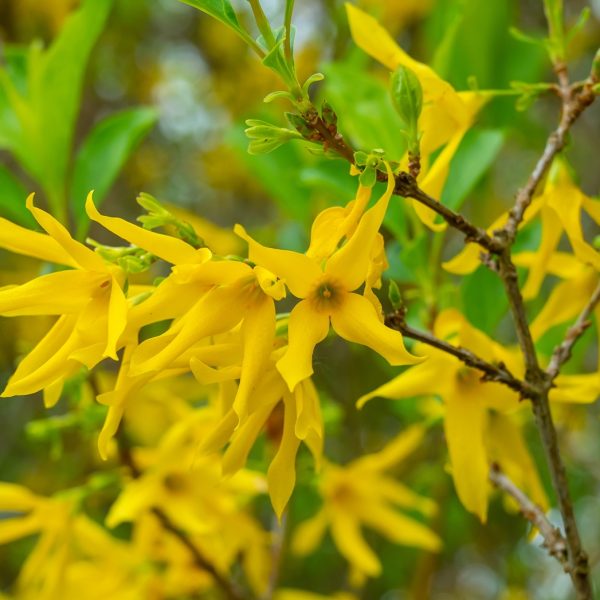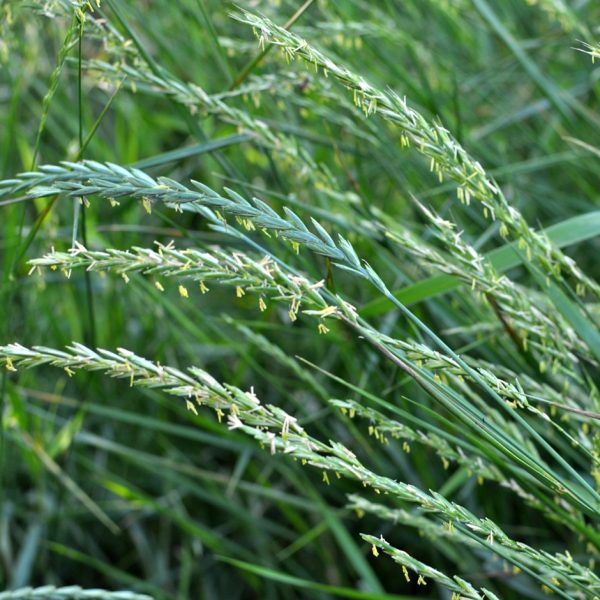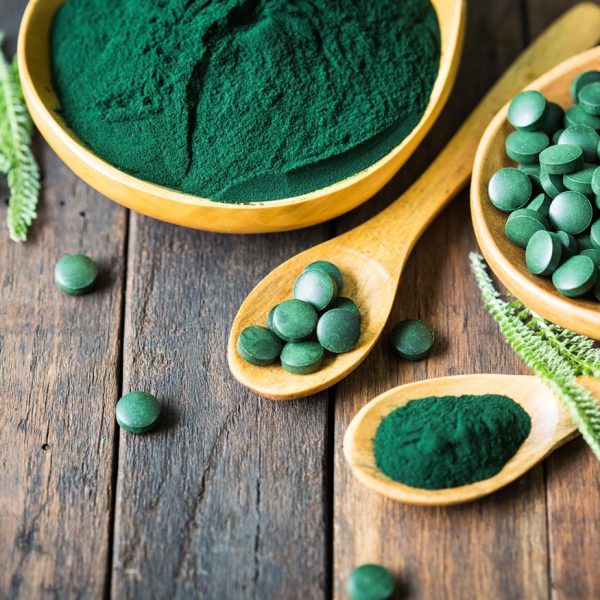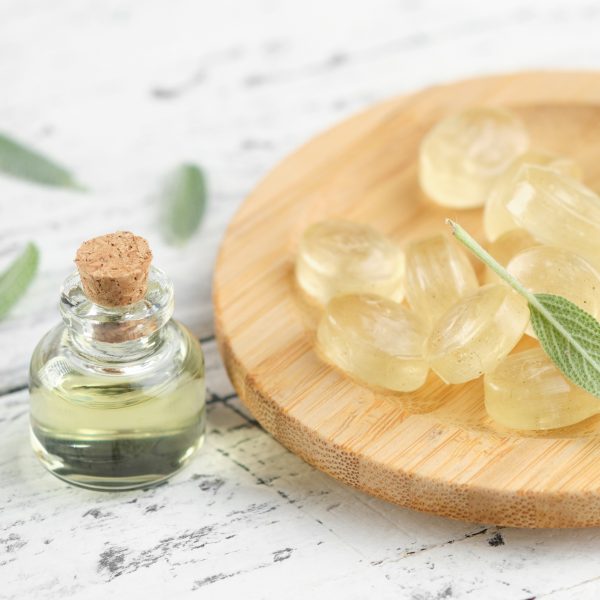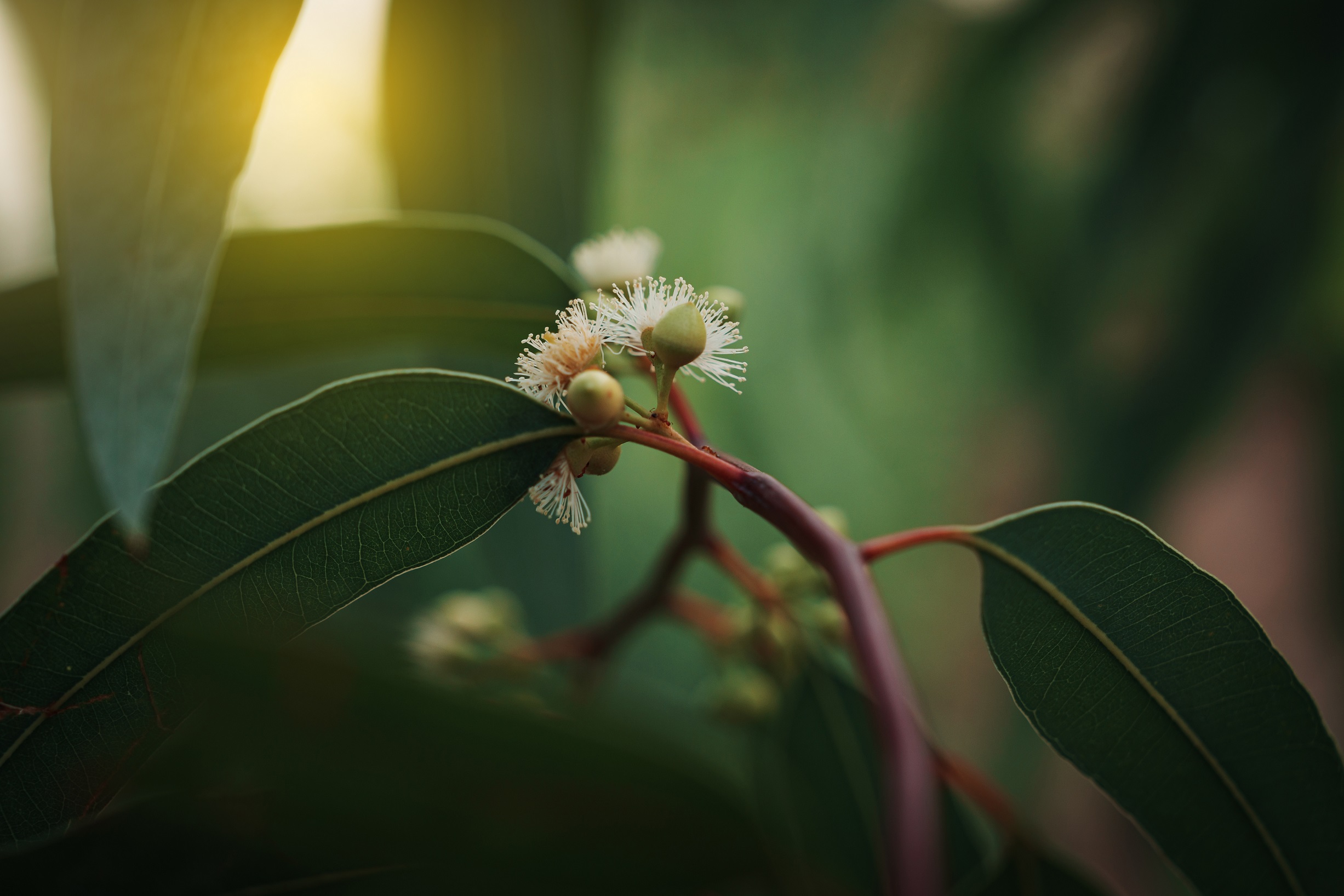-
How does it feel?
An infusion made with the leaves is immediately aromatic as the steam rises from the tea. Made in this way the infusion should be covered with a lid while the leaves steep to prevent the volatile oils from escaping.
On drinking the infusion, the aromatic oils reach your senses first, invoking a minty, crisp and camphoraceous smell that precedes the aromatic taste. The inhalation of the steam from sipping the tea creates an immediate uplifting and clearing sensation. The taste is mildly aromatic, sharp, sour, and astringent. These tastes all correlate to the volatile oils which stimulate digestion, expectorate the lungs, stimulate circulation, and are strongly antimicrobial. The sinuses and lungs feel clearer within minutes and a warmth spreads throughout the body as the blood is directed towards the periphery. Digestion is stimulated as the sensation moves down through the digestive tract, as well as up into the head where it brings clarity and focus.In a similar way to peppermint, the infusion leaves a cool sensation in the mouth, which is refreshing and invigorating.
A steam inhalation of the essential oil added to hot water is immediately clearing for the sinuses, being both uplifting and invigorating.
-
What can I use it for?

Eucalyptus flower and leaves (Eucalyptus globulus) Eucalyptus leaves and bark are high in essential oils with antiseptic, antiviral, antibacterial, antifungal, anti-inflammatory, decongestant and expectorant properties (1).
Eucalyptus can be taken internally as an infusion or tincture of the leaf, but is more commonly used externally in the form of the essential oil (EO). An infusion of the leaves is therapeutic in the early stages of a cold/flu to help with nasal and respiratory congestion, to support the immune system, soothe a sore throat and decongest the sinuses (2). The EO contains only the volatile oils, and is manufactured by steam distillation of large quantities of the leaf material (3). This is rarely taken internally, and needs to be diluted for both internal and external use (see dosage guidelines below).
Eucalyptus is one of the most powerful antiseptic herbs, which can be used whenever an antimicrobial action is required. This can be applied directly to the skin to cleanse wounds, or via steam inhalation to apply the antimicrobial action directly to the mucous membranes of the respiratory tract. In the case of inhalation (from steam inhalation or a balm applied to the chest) it will also have a decongestant and expectorant action to clear mucus and congestion from the respiratory tracts.
Eucalyptus oil can be used in a diffuser or room spray as a decongestant, to relieve mental fatigue, to clear airborne pathogens and acts as an insect repellent (2,4).
As a massage oil or added to a bath, it will clear respiratory and sinus congestion, relieve tired or aching muscles, soothe skin damage and irritations, enhance circulation, aid relaxation and soothe the nervous system (4,5).
Use the EO or fresh leaves in a facial steam to cleanse the skin, clear congestion in the sinuses and lungs, and relieve cold, flu or allergy symptoms (2,4).
A eucalyptus leaf infusion or tincture can be used as a gargle, throat spray or mouth rinse for sore throat, throat infections, mouth/gum inflammations and tooth infections (2,6).
-
Into the heart of eucalyptus
Energetically, eucalyptus is warm and dry (7,8). This suits conditions where there is dampness or stagnation in the body such as congestion due to thick mucus lining the mucous membranes, or to stimulate the circulation(8,9). The volatile oils in eucalyptus help to break down mucus and encourage expectoration, creating the decongestant action on the mucous membranes (10). Combined with the astringent action of the tannins, eucalyptus will dry up congested mucous membranes and protect them from further infection via its antimicrobial action (10).
As a flower essence eucalyptus has a liberating effect, helping someone to accept life as it is (11). Eucalyptus macrocarpa as an essence enhances the function of the adrenal glands, increasing resilience, energy and vitality in those who have over-extended themselves into burnout (11). The essence of Eucalyptus caesia helps to show direction to those that feel at a crossroads in their lives and are unsure which path to take (11).
-
Traditional uses

Snow gum tree (Eucalyptus pauciflora) In aboriginal cultures the leaves were traditionally burned for inhalation, used as an external poultice for wounds, or taken internally for fever and infection (1,2). The sap and gum were used to treat burns, cuts and sores, and taken internally in drinks for intermittent fever (1,12). Felter reported a case of a crew of sailors in the 1850s being nearly decimated by a pernicious fever, off the coast of Australia, which resulted in a full recovery upon drinking a eucalyptus leaf infusion (12). Dr Ramel of Valencia is said to have introduced the remedy into Europe in 1866, when it was employed extensively as an antipyretic (fever reducing) in treating malarial conditions (12). The therapeutic action in malaria was as a febrifuge to reduce the fever, as well as also reducing the associated malaise, muscular aching, malarial neuralgia and headache (13). The roots of eucalyptus trees have a remarkable ability to absorb large quantities of water from the soil, which resulted in a gradual disappearance of mosquitos around plantations (14). In Europe it was extensively planted not only for the direct medicinal qualities of using the herb, but also to combat malaria by reducing the breeding grounds for mosquitos and subsequently their populations (11,14).
The leaves were used to make tincture (administered in doses of 10— 30 drops); fluid extract (doses of 5— 30 drops), syrup; or, eucalyptus oil (10— 30 drops given in capsules, with glycerine or syrup) (12). The preparations were used as a tonic; gentle stimulating stomachic; in atonic dyspepsia; catarrh of the stomach; mucous catarrhal affections generally; laryngitis; asthma; chronic bronchitis; emphysema; pulmonary tuberculosis; whooping-cough; scarlet fever; chronic catarrh of the bladder; discoloured, purulent urine and increased pain (12,14). The antiseptic properties of eucalyptus gave it prominent place in the therapeutics of typhoid fever as an intestinal antiseptic, and also as a preventative to contracting the disease (13).
For topical use, both the leaves and the oil were applied locally for bronchial afflictions with expectoration of profuse, foetid mucous discharges; vaginal leucorrhoea; offensive discharges; gonorrhoeal discharges; indolent, foetid wounds or ulcers; cancerous ulceration; septicaemia, and gangrene (12,14). Externally, applications were also used to give relief from migraine and some forms of neuralgic and rheumatic pains (12). The leaves were either applied directly to the affected area or combined with other ingredients to form a poultice (12). A fluid extract was either diluted in water for external application or used in the form of a compress on lint moistened with the tincture (12). Eucalyptus oil was also an ingredient in “catheder oil” which was used for sterilising and lubricating urethral catheters (14).
In throat and pulmonary maladies, a diluted tincture was inhaled in the form of spray, or the oil dropped on a cotton pad, from which the vapour was inhaled (12). The vapours of eucalyptus were used in tonsillitis, chronic post-nasal and bronchial catarrh, and in asthma combined with that of thorn apple (Datura stramonium), and any condition of the lungs and bronchi where there is offensive expectoration, pus or a suggestion of gangrene (13). The leaves of eucalyptus were also made up into cigars or cigarettes and smoked to bring relief in bronchial catarrh, asthma, and other respiratory afflictions (12).
Eucalyptus gum (exudation from the bark) was used to form lozenges and pastilles, and used as an astringent to treat inflamed sore throats (15). A tincture or liquid extract of the gum was used externally as a styptic for nose bleeds and wounds, or internally for diarrhoea and dysentery (15).
Eucalyptus honey, gathered by bees from eucalyptus flowers, was recommended for parasitic and putrescent conditions, gonorrhoea, fevers, and catarrhal diseases, used as a sedative to the heart, actively diuretic, and to increase the elimination of uric acid (12).
-
Traditional actions
Herbal actions describe therapeutic changes that occur in the body in response to taking a herb. These actions are used to express how a herb physiologically influences cells, tissues, organs or systems. Clinical observations are traditionally what have defined these actions: an increase in urine output, diuretic; improved wound healing, vulnerary; or a reduction in fever, antipyretic. These descriptors too have become a means to group herbs by their effects on the body — herbs with a nervine action have become the nervines, herbs with a bitter action are the bitters. Recognising herbs as members of these groups provides a preliminary familiarity with their mechanisms from which to then develop an understanding of their affinities and nuance and discern their clinical significance.
-
Traditional energetic actions
Herbal energetics are the descriptions Herbalists have given to plants, mushrooms, lichens, foods, and some minerals based on the direct experience of how they taste, feel, and work in the body. All traditional health systems use these principles to explain how the environment we live in and absorb, impacts our health. Find out more about traditional energetic actions in our article “An introduction to herbal energetics“.
Western energetics
-
What practitioners say

Eucalyptus leaves in the rain (Eucalyptus globulus) Respiratory
Eucalyptus oil is antimicrobial, immune-stimulatory, anti-inflammatory, antioxidant, analgesic, and spasmolytic, suiting it to many conditions affecting the respiratory system (16). Although the essential oil (EO) constituents vary across the eucalyptus species, all eucalyptus oils have antibacterial and antiviral activity against a broad range of organisms and strains (1,10,13). This antimicrobial activity of eucalyptus oil has been demonstrated against Streptococcus pneumoniae, Staphylococcus aureus, and Haemophilus influenzae, which are some of the most common pathogens causing respiratory tract infections such as influenza, otitis media (ear infection), sinusitis, bronchitis and pneumonia (3,18). The treatment of many of these conditions with antibiotics is threatened by the development of worldwide antibiotic resistance (18). However, the complex mixture of constituents in EOs is advantageous because pathogens have difficulty in developing resistance mechanisms to the multiple constituents (19). The inhalation of eucalyptus EO via a steam inhalation delivers the constituents directly into the lungs to act on the infecting pathogens (2). Similarly, the application of the EO in a carrier oil or as a balm to the chest and back will allow the vapour oils to be inhaled as well as being absorbed through the skin (7). The combination of peppermint and eucalyptus EO for inhalation works well to loosen mucus for expectoration and dilate the airways to ease breathing (20).
Eucalyptus can also be taken internally as a tincture, or infusion by adding to a blend which is specific to the individual condition and the other symptoms being treated (13,21). The mucolytic, broncho-dilating, and anti-inflammatory actions suit eucalyptus as an ingredient in formulas for asthma, acute bronchitis, chronic bronchitis and COPD (22,23,24,28). The immune stimulating properties of eucalyptus make it a powerful ingredient to add to an immune-supporting formula, combining well with echinacea, astragalus, elderberry and rosehip during the cold and flu season.
Eucalyptus stimulates the circulation, which enhances blood flow to the skin and promotes sweating (11). This helps to lower a fever, clear toxins from the blood and speed up the resolution of a fever in conditions such as chickenpox and measles (11).
The expectorant and decongestant action of eucalyptus makes it a valuable remedy for sinus and lung congestion, damp coughs, lingering chest infections, damp asthma, and catarrh (2,7). Eucalyptus thins phlegm and mucus making it less viscous and easier for the body to expel, as well as inhibiting the secretion of more mucus via an anti-inflammatory cascade (3). The combination of the antimicrobial and decongestant actions make it effective in relieving the symptoms of colds, influenza, respiratory infections, rhinitis, and sinusitis (16). The expectorant and decongestant action is best achieved via a steam inhalation, diffuser or applied as a balm to the chest from inhalation of the vapours (7). When inhaled, the combined actions of eucalyptus clears the head and respiratory tracts, soothes the lungs, deters infection and stimulates immunity (2). It is best used at the onset of symptoms such as sore throat, aches and pains, fever and malaise (11).
A eucalyptus leaf decoction can be used as a mouthwash for infected gums, gargle for sore throat or as an ingredient in throat spray which is both soothing and protective (6).

Eucalyptus gum tree (Eucalyptus globulus) Skin
Eucalyptus EO has broad spectrum antimicrobial effects against many bacteria, including Mycobacterium tuberculosis and methicillin-resistant Staphylococcus aureus (MRSA), fungi (including Candida) and viruses (16). Topical application of the EO in a carrier oil, as an ointment or cream can be used for skin infections, wounds, cold sores, herpes sores, shingles, chicken pox, measles, and fungal infections (2,6,11,16). This has been demonstrated in clinical research for the fungal infections tinea pedis (athlete’s foot), tinea corporis (ringworm) and tinea cruris (jock itch) (25). It can also be added as an ingredient in treatments for headlice, combining well with thyme, tea tree, rosemary and lavender (5).
Eucalyptus EO has significant wound healing activity via mechanisms of angiogenesis (formation of new blood vessels), collagen deposition, granulation tissue formation, epithelialization, and wound contraction at the proliferative stage (3). Combined with the antiseptic and anti-inflammatory actions, this makes it a valuable ingredient to add to wound-healing balms and creams. Eucalyptus leaves can be used to make a compress, or an infusion used as a wash for burns, cuts, wounds, abscess (4,6). Leaf decoction can be used as a douche for thrush, vaginal discharges, leukorrhea, haemorrhoids (6).
Musculoskeletal
Diluted oil, or EO in a balm can be applied topically for inflamed joints, arthritis, muscular aches and pains, gout and neuralgia (6,7). When applied locally for aching muscles and arthritic conditions it combines well with rosemary, lavender or marjoram (11). Eucalyptus EO or dried leaves can be added to Epsom salts to use as a bath soak to improve circulation, reduce joint inflammation and support aching muscles and joints (4). The EO, diluted in a carrier oil can be rubbed in the temples for headaches and migraines, combining well with peppermint or rosemary EO (4,6).
-
Research

Eucalyptus nuts (Eucalyptus globulus) Respiratory
The recommendations for the use of eucalyptus for respiratory ailments are based on its traditional use, as there is insufficient evidence on its effectiveness from clinical trials (26). A review of pre-clinical data on the effects of eucalyptus oil and eucalyptol (cineole, the main constituent in eucalyptus oil) identified anti-inflammatory, expectorant, bronchodilator and analgesic effects, and concluded therapeutic utility in respiratory disorders (27). Several clinical studies have used the isolated constituent cineol, from eucalyptus oil, to provide evidence for the use of eucalyptus for respiratory disorders.
Asthma
Juergens et al. enrolled 32 patients with steroid-dependent bronchial asthma to be randomly assigned to receive 200 mg cineol (three times per day) or a placebo for 12 weeks. The cineol group were able to reduce their steroid use by 36% by the end of the 12 weeks, while the placebo group decreased use by only 7%. The authors concluded that the anti-inflammatory activity of cineol could be used as a steroid-saving therapy in steroid-dependent asthma (24).
A similar study of 247 patients with steroid-dependant asthma used a double blind, placebo controlled protocol to investigate cineole as a concomitant therapy (22). The patients were administered 200 mg of cineole (three times per day) or a placebo, for six months. The cineole group had a significantly greater improvement in lung function, asthma symptoms, and quality of life compared to the placebo group (p = 0.0027) (22).
Acute bronchitis
A placebo-controlled trial of 242 patients with acute bronchitis were administered 200 mg cineole (three times per day) for ten days (28). There was a significant improvement in bronchitis symptoms compared to the placebo group, particularly the frequency of coughing. The authors suggested that the antitussive effects of the cineole were due to the anti-inflammatory action and improved mucociliary clearance (28).
COPD
Cineole has also shown benefits in patients with COPD by improving pulmonary function, reducing the exacerbation rate and improving quality of life (23). A placebo-controlled trial of 242 patients with COPD received either 200 mg cineol (three times per day) or a placebo as a concomitant therapy for six months. The authors concluded that concomitant therapy with cineole reduces COPD exacerbations and dyspnoea, and improves lung function and health status by controlling airway inflammation in COPD (23).
Sinusitis
A randomised, double blind, placebo controlled trial explored the efficacy of cineol in the patients with acute rhinosinusitis (29). Treatment group (200 mg cineole, three times per day) and the placebo group both contained 76 patients who took the treatment for seven days. The improvement in symptoms was significantly greater in the cineol group after four days and seven days. The authors concluded timely treatment with cineole is effective and safe in patients with acute non-purulent rhinosinusitis and prevents the need for antibiotics (29).
Fungal infection
Fifty patients with either tinea pedis (athlete’s foot), tinea corporis (ringworm) or tinea cruris (jock itch) were treated with an ointment containing eucalyptus essential oil (1%) (25). The ointment was applied twice a day to all the affected areas, for three weeks. After the first week of treatment 40% of the cases had a significant improvement in symptoms of inflammation, scaling, itching, vesiculation and pustulation. By the end of the third week 60% had a complete recovery of symptoms and the remaining 40% had a significant improvement. All patients tested negative for the fungal infection from a skin sample by the end of the third week (25). No side effects or skin irritation was reported. Some caution is advised when interpreting this data as there was no placebo or control group, meaning any improvement which could have occurred without treatment is not accounted for.
-
Did you know?
The eucalyptus flower buds are covered by a round cap-like membrane called a calyptos, which is thrown off when the flowers expand (30). This is derived from the Greek eucalypos, meaning well-covered, from which the genus name Eucalyptus stems (14).
Eucalyptus trees grow very rapidly with one of the species, Eucalyptus amydalin, being the tallest known tree, growing to 480 feet (~150 metres), exceeding the Californian giant sequoia (14).
Additional information
-
Botanical description
According to the Royal Botanical Gardens Kew, there are 713 accepted species of eucalyptus (32). Many of these species can be used medicinally but will vary in the concentration of the active constituents (13). The species licensed for use in commercially available herbal medicine products is Eucalyptus globulus (26).
Eucalyptus species are evergreen and can vary from a short shrub to a tall tree (1). It has bark that ranges from blue-grey to mottled white or brown and peels off in strips to reveal yellow patches underneath (1,30). A red resin exudes through breaks in the bark, hence the tree’s common name — the gum tree (30). The younger leaves are whitish-blue, rounded, opposite and unstalked (14). The mature leaves are a grey-blue-green, lanceolate, slender and up to 20 cm long, hanging downwards in pairs from a single stalk (1). The leaves have a leathery texture and are studded with glands containing the aromatic essential oils (14).
The flower buds are cone-shaped and grouped together in sets of three on short stalks, each bud has a round cap on top called the calyptus, which falls off to when the flowers expand, revealing the fluffy white or red flower stamens (14,30). The flowers resemble tassels of stamens, opening a year after the buds are formed (30). In the middle of the flower a hard, woody pod develops that opens to release seeds (30).
-
Common names
There are several eucalyptus species:
- Blue gum (Eucalyptus globulus)
- Snow gum (Eucalyptus pauciflora)
- Cabbage gum (Eucalyptus pauciflora)
- Cider gum (Eucalyptus gunnii)
- Stringy bark tree (Eucalyptus obliqua)
-
Safety
Eucalyptus oil should be avoided internally and externally during pregnancy and only when breast-feeding under the guidance of a medical practitioner (13). You can find qualified medical herbal professionals on our Resources page.
Eucalyptus leaf tincture and infusion is safe for internal use, and there are no risks or side effects when taken at the recommended dosages (7,26). The undiluted essential oil (EO) is toxic if taken internally and should not be applied to the skin without being diluted in a carrier oil or base cream (13). A dose of 3.5 ml undiluted EO has been fatal, and symptoms of poisoning include epigastric burning, nausea and vomiting, dizziness, muscular weakness, miosis, a feeling of suffocation, cyanosis, delirium and convulsions (13).
-
Interactions
None known (13)
-
Contraindications
Eucalyptus oils should be diluted before either internal or external use.
Large doses can have a hypotensive effect, so caution is warranted with low blood pressure (31).
Urinary excretion of the volatile oils can cause kidney irritation and internal use should be avoided in kidney conditions (31).
Eucalyptus preparations are not suitable for children under the age of two years old, including inhalation of the essential oil (31). The Committee on Herbal Medicinal Products states that preparations of eucalyptus leaf medicine should only be used by adults and children over 12 years old (26).
-
Preparations
- Tincture
- Inhalation
- Infused oil
- Essential oil
- Ointment
- Cream
-
Dosage
- Infusion: 2–3 g dried leaf in 150 ml water, twice per day (6)
- Tincture (1:3 | 45%): 1–2 ml, three times per day (6,21)
- FE (1:1): 2–4ml per day (13)
- Eucalyptus oil: Internal use 0.05–0.2ml (1–4 drops) (13)
- Inhalation: 12 drops of essential oil or a teaspoon of dried herb in a bowl of boiling water (1). Up to 3 ml (60 drops) in 500 ml boiling water (16). Place a towel over the head and bowl and inhale the stream (1).
- Topical: 1–10% ointment or cream, applied 2–3 times a day (3,25)
-
Plant parts used
- Leaves
- Bark
- Gum
-
Constituents
- Volatile oils (0.5–3.5%): Eucalyptol – also known as cineol (70–85%); monoterpenes (a-pinene, b-pinene, d-limonene, p-cymene, a-phellandrene, camphene, g-terpinene); sesquiterpenes (aromadendrene, alloaromadendrene, globulol, epiglobulol, ledol, viridiflorol); aldehydes (myrtenal); and ketones (carvone, pinocarvone) (13,21)
- Flavonoids: Eucalyptrin, hyperoside, quercetin, quercitrin, rutin (13)
- Tannins (13)
- Resins and waxes (13)

-
Habitat
The native distribution of the eucalyptus tree is Australia and Malaysia, but has been introduced across the world, and there are now over 700 species globally (32). Among the widely introduced species, Eucalyptus globulus has become the most extensively cultivated species and well-represented in the international pharmacopoeia (3). Eucalyptus has grown successfully in Europe and the UK since the mid nineteenth century, thriving in temperatures as low as 15 degrees Celsius and tolerating as low as minus 2 degrees Celsius (14,33). Only about twelve of the species grow in Europe, and the two most common species in the UK are Eucalyptus gunnii, E. globulus, E. nitens and E. pauciflora (30,33).
-
Sustainability

Find FairWild certified producers for eucalyptus. Eucalyptus is widely distributed across the globe with no threats to extinction. Eucalyptus is not listed on CITES, United Plant Savers or the International Union for Conservation of Nature (IUCN) (34,35,36). The IUCN have globally assessed many species of the eucalyptus genus and list them as stable and “Least Concern”, and there are currently no major threats reported (36).
Habitat loss and over-harvesting from the wild are two of the biggest threats faced by medicinal plant species. There are an increasing number of well-known herbal medicines at risk of extinction. We must, therefore, ensure that we source our medicines with sustainability in mind.
The herb supplement industry is growing at a rapid rate and until recent years a vast majority of medicinal plant produce in global trade was of unknown origin. There are some very real and urgent issues surrounding sustainability in the herb industry. These include environmental factors that affect the medicinal viability of herbs, the safety of the habitats that they are taken from, as well as the welfare of workers in the trade.
The botanical supply chain efforts for improved visibility (transparency and traceability) into verifiably sustainable production sites around the world is now certificated through the emergence of credible international voluntary sustainability standards (VSS).
Read our article on Herbal quality and safety: What to know before you buy and Sustainable sourcing of herbs to learn more about what to look for and questions to ask suppliers about sustainability.
-
Quality control
Herbal medicines are often very safe to take; however, their safety and efficacy can be jeopardised by quality issues. So, it is important to buy herbal medicines from a reputable supplier, from sources known to test their herbs to ensure there is no contamination, adulteration or substitution with incorrect plant matter, as well as ensuring that recognised marker compounds are at appropriate levels in the herbs.
Some important quality assurances to look for are certified organic labelling, the correct scientific/botanical name, and the availability of information from the supplier about ingredient origins. A supplier should be able to tell you where the herbs have come from, what contaminants are not in the herb, and what the primary compounds are.
-
How to grow
Eucalyptus can be grown from seeds sown in February/March indoors, potting seedlings into individual pots as soon as the second set of seeds appear (1). Plant in the permanent position in early summer, choosing carefully as some species grow tall rapidly and they generally do not transplant well (1,33). Eucalyptus trees prefer well-drained soil but grow well in poor soil quality, in a sunny but sheltered place as they do not grow well in the shade (1). Use a deep mulch around the roots to prevent water loss and to protect the roots from freezing (1). Cuttings can be taken in the summer months from shoots over 10 cm long with at least one leaf bud (1). Leaves can be harvested for use fresh or dried at any time of the year (1). The Royal Horticultural Society provides a detailed guide for growing eucalyptus, which you can find on their website page How to grow eucalyptus (37).
-
Recipe
Decongestant chest rub*
Ingredients
- Handful of eucalyptus leaves
- 100g coconut oil
- 15 drops eucalyptus essential oil
- 15 drops lavender essential oil
- 10 drops thyme essential oil
Method
- Place the eucalyptus leaves and coconut oil in a bain-marie and gently heat for 1—2 hours until the oil is light green in colour. Do not let the water boil, the steam will be enough to heat the oil, if you start to see bubbles in the oil then turn the heat down.
- Remove from the heat and strain the leaves through a sieve.
- Stir in the essential oils, pour into a jar and leave to cool and set before applying the lid.
- To use, rub over the chest and back as needed (4).
* Adapted from Chown and Walker
-
References
- Stobart, A. The Medicinal Forest Garden Handbook. Permanent Publications; 2020.
- Mars, B. The Desktop Guide to Herbal Medicine. Basic Health Publications Inc; 2007.
- Chandorkar N, Tambe S, Amin P, Madankar C. A systematic and comprehensive review on current understanding of the pharmacological actions, molecular mechanisms, and clinical implications of the genus Eucalyptus. Phytomedicine Plus. 2021;1(4):100089. https://doi.org/10.1016/j.phyplu.2021.100089
- Chown V and Walker K. The Handmade Apothecary: Healing Herbal Remedies. Kyle Books; 2017.
- McIntyre, A. Herbal Treatment of Children. Elsevier, Butterworth, Heinemann; 2005.
- McIntyre A, Boudin M. Dispensing with Tradition: A Practitioner’s Guide to Using Indian and Western Herbs the Ayurvedic Way. Anne McIntyre & Michelle Boudin; 2012.
- Easley T, Horne S. The Modern Herbal Dispensatory: A Medicine-Making Guide. North Atlantic Books; 2016.
- Wood M. The Earthwise Herbal Volume 1: A Complete Guide to New World Medicinal Plants. North Atlantic Books; 2008.
- Maier K. Energetic Herbalism: A Guide to Sacred Plant Traditions Integrating Elements of Vitalism, Ayurveda, and Chinese Medicine. Chelsea Green Publishing; 2021.
- Pengelly A. The constituents of medicinal plants: an introduction to the chemistry and therapeutics of herbal medicine. CABI Publishing; 2004.
- McIntyre A. Flower Power: flower remedies for healing body and soul through herbalism, homoeopathy, aromatherapy, and flower essences. Henry Holt; 1996.
- Felter H. W, Lloyd J. U. Kings American Dispensary; 18th Edit; 1898. Reprinted on Henritttas Herbpages. Accessed August 27, 2024. https://www.henriettes-herb.com/eclectic/kings/eucalyptus.html
- Ellingwood, F. The American Materia Medica, Therapeutics and Pharmacognosy; 1919. Reprinted on Henritttas Herbpages. Accessed August 27, 2024. https://www.henriettes-herb.com/eclectic/ellingwood/eucalyptus.html
- Grieve M, Leyel CF, Marshall M. A Modern Herbal. the Medicinal, Culinary, Cosmetic and Economic Properties, Cultivation and Folk-Lore of Herbs, Grasses, Fungi, Shrubs & Trees with All Their Modern Scientific Uses. Dover Publications; 1982.
- British Pharmaceutical Codex 1911. Reprinted on Henritttas Herbpages. Accessed August 27, 2024. https://www.henriettes-herb.com/eclectic/bpc1911/eucalyptus-rost.html
- Sadlon AE, Lamson DW. Immune-modifying and antimicrobial effects of Eucalyptus oil and simple inhalation devices. Alternative medicine review. 2010;15(1):33-43.
- Barnes, J., Anderson, L.A. and Phillipson, J.D. Herbal medicines: a guide for healthcare professionals: Third Edition. Pharmaceutical press; 2007.
- Miguel MG, Gago C, Antunes MD, Lagoas S, Faleiro ML, Megías C, Cortés-Giraldo I, Vioque J, Figueiredo AC. Antibacterial, antioxidant, and antiproliferative activities of Corymbia citriodora and the essential oils of eight Eucalyptus species. Medicines. 2018;5(3):61. https://doi.org/10.3390/medicines5030061
- Chouhan S, Sharma K, Guleria S. Antimicrobial activity of some essential oils—present status and future perspectives. Medicines. 2017;4(3):58. https://doi.org/10.3390/medicines4030058
- Bone K and Mills S. Principles and Practice of Phytotherapy: Modern Herbal Medicine. Elsevier Health Sciences; 2013.
- Hoffmann D. Medicinal Herbalism, The Science and Practice of Herbal Medicine. Healing Arts Press; 2003.
- Worth H, Dethlefsen U. Patients with asthma benefit from concomitant therapy with cineole: a placebo-controlled, double-blind trial. Journal of Asthma. 2012;49(8):849-53. https://doi.org/10.3109/02770903.2012.717657
- Worth H, Schacher C, Dethlefsen U. Concomitant therapy with Cineole (Eucalyptole) reduces exacerbations in COPD: A placebo-controlled double-blind trial. Respiratory research. 2009;10(1):1-7. https://doi.org/10.1186/1465-9921-10-69
- Juergens UR, Dethlefsen U, Steinkamp G, Gillissen A, Repges R, Vetter H. Anti-inflammatory activity of 1.8-cineol (eucalyptol) in bronchial asthma: a double-blind placebo-controlled trial. Respiratory medicine. 2003; 97(3):250-6. https://www.resmedjournal.com/article/S0954-6111(03)91432-6/pdf
- Shahi SK, Shukla AC, Bajaj AK, Banerjee U, Rimek D, Midgely G, Dikshit A. Broad spectrum herbal therapy against superficial fungal infections. Skin Pharmacology and Physiology. 2000;13(1):60-4. https://www.proquest.com/scholarly-journals/broad-spectrum-herbal-therapy-against-superficial/docview/225269024/se-2?accountid=15133
- European Committee on Herbal Medicine Products (HMPC). Eucalypti folium (Eucalyptus leaf)- herbal medicinal product: European Medicines Agency. Accessed: 2 September, 2024. https://www.ema.europa.eu/en/medicines/herbal/eucalypti-folium
- Galan DM, Ezeudu NE, Garcia J, Geronimo CA, Berry NM, Malcolm BJ. Eucalyptol (1, 8-cineole): an underutilized ally in respiratory disorders?. Journal of essential oil research. 2020;32(2):103-10. https://doi.org/10.1080/10412905.2020.1716867
- Fischer, J., Dethlefsen, U. Efficacy of cineole in patients suffering from acute bronchitis: a placebo-controlled double-blind trial. Cough. 2013;25.. https://doi.org/10.1186/1745-9974-9-25
- Kehrl W, Sonnemann U, Dethlefsen U. Therapy for acute non-purulent rhinosinusitis with cineole: results of a double‐blind, randomized, placebo‐controlled trial. The Laryngoscope. 2004;114(4):738-42. https://doi.org/10.1097/00005537-200404000-00027
- Woodland Trust. Eucalyptus (Eucalyptus sp.). Accessed August 20, 2014. https://www.woodlandtrust.org.uk/trees-woods-and-wildlife/british-trees/a-z-of-british-trees/eucalyptus/
- Brinker, FJ. Herbal Contraindications & Drug Interactions: Plus Herbal Adjuncts with Medicines. Eclectic Medical Publications, 2010.
- Royal Botanical Gardens Kew. Eucalyptus L’Her. Plants of the Word Online (POWO). Accessed August 20, 2024. https://powo.science.kew.org/taxon/urn:lsid:ipni.org:names:27534-1
- Leslie A, Mencuccini M, Perks MP. Eucalyptus in the British Isles. Quarterly Journal of Forestry. 2011;105(1):43-53. https://insight.cumbria.ac.uk/id/eprint/3544
- Convention on International Trade in Endangered Species of Wild Fauna and Flora (CITES). Accessed August 20, 2024. https://checklist.cites.org/#/en
- UpS list of herbs & analogs. United Plant Savers. Published May 14, 2021. Accessed August 20, 2024. https://unitedplantsavers.org/ups-list-of-herbs-analogs/
- IUCN red list of threatened species: Eucalyptus- Genus. Accessed August 20, 2024. https://www.iucnredlist.org/search?taxonomies=116678&searchType=species
- Royal Horticultural Society. Eucalyptus. Accessed August 28, 2024. https://www.rhs.org.uk/plants/eucalyptus

